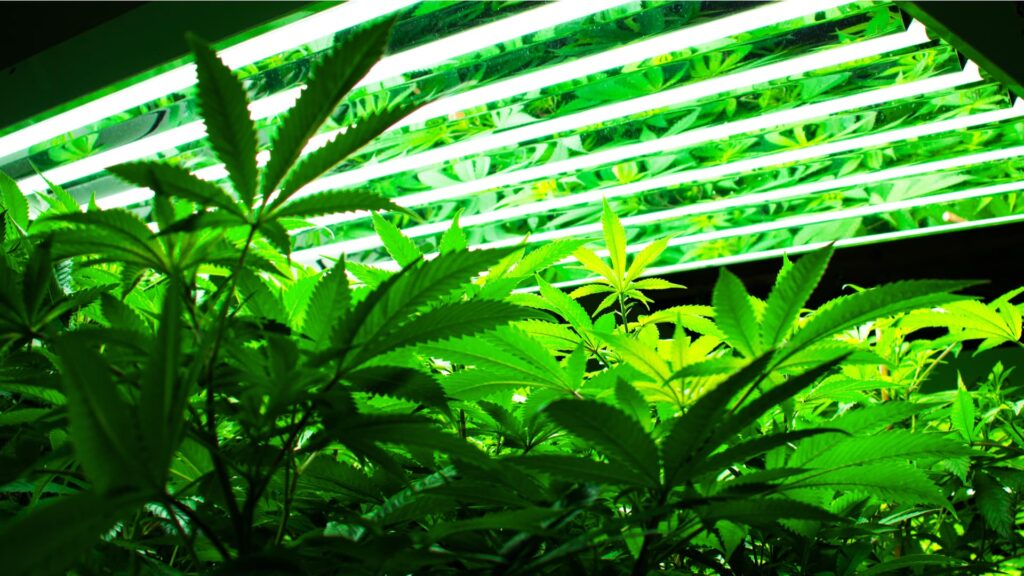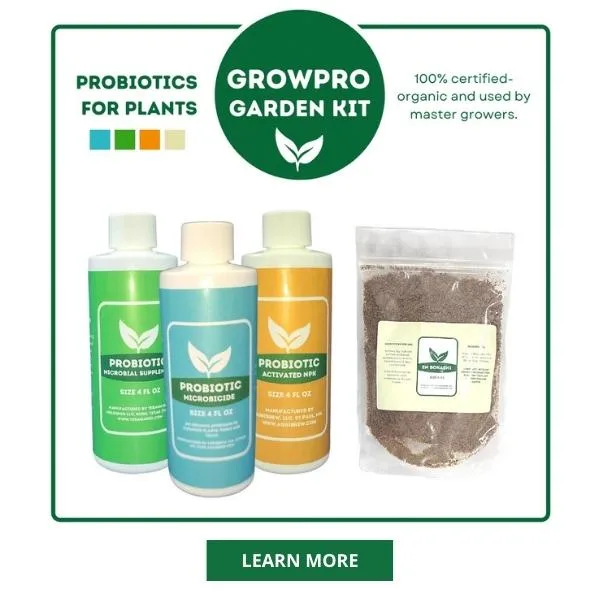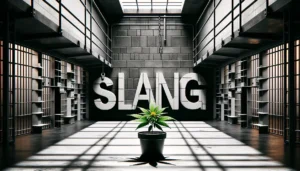For decades, the indoor vs. outdoor debate has been argued among growers and cannabis enthusiasts. Some say the desired end product should drive your decision to grow indoors or outdoors, but truth be told—both methods produce excellent results when grown properly. So what are the driving factors to consider when choosing to grow indoor vs. outdoor weed? This post will help you weigh your options and begin your cannabis cultivation journey.
Growing Weed Indoors vs Outdoors: Factors to Consider
Choosing to grow indoor vs. outdoor weed is a multifaceted decision. You may have preferences or goals for your garden but face limitations due to climate or environment. While not an exhaustive list, here are our top five factors to consider when choosing your type of grow.
Factor #1: Climate
Climate is the first factor to consider because you won’t be able to strategically plan your crop until you know where you’ll be growing. For example, cannabis loves sunshine and needs a summer season to reach its full potential outdoors. That means that if you live in a densely wooded forest with limited sunshine through the canopy, growing outdoors might not be your best option.
Likewise, if you plan to grow in an area that receives full sun all day long in a dry climate, you had better be prepared to water your plants heavily. Many deserts and high desert climates will require daily watering to keep your plants happy. If you like to take long summer vacations, outdoor growing might not be for you.
Other climate considerations include too much moisture. If you live in an area that receives substantial rainfall during the summer months, you would want to opt for a greenhouse over fully sun-grown plants. Too much moisture and humidity can lead to bud rot, mold, and mildew.
Ultimately, if you do not live somewhere where you can grow weed outdoors, you’ll be better off with an indoor grow.
Factor #2: Space
Whether growing medically or recreationally, each state has different laws about how many plants you are allowed to grow. An adult living in a recreational marijuana state can grow about four to six plants on average per household. Medical marijuana patients can often grow significantly more but must have legally registered medical marijuana cards.
Regardless of adult-use or MMJ grows, you’ll need adequate space for the number of plants you intend to grow. Outdoor plants will be much larger than indoor plants because you have less control over their height and width when they are outside. However, don’t be fooled into thinking that indoor plants are tiny. They will take up as much space as they are given the best weed fertilizers.
To avoid overcrowding an indoor grow setup, plan for enough space for the fully mature plants to grow into. Plan for three square feet per plant to ensure that the branches of neighboring plants do not touch each other. A crowded grow room is susceptible to problems like mold due to limited airflow and the transfer of pests or diseases.
Outdoor crops need more space to grow and should be spaced four to six feet apart. You need to be able to get around each plant with ease since you’ll be working up in the plant to stake up big branches, remove dead leaves, and build a trellis as they get close to maturity.
Keep in mind that each strain of cannabis grows differently. Some plants, like sativas, tend to be tall and lanky, while many indicas are shorter and bushier. Do a little strain research ahead of choosing to grow indoor vs. outdoor weed. Don’t forget to account for additional space to dry and cure your harvested plants.
Factor #3: Price
Growing weed is an investment, and it’s a risky one. Any type of cultivation, especially for first-time growers, comes with a bit of trial and error that can add up financially. If you are using price to determine your growing preference, it’s probably not surprising to hear that growing indoors is usually a bigger initial investment. In addition, when starting from scratch, an indoor grow requires a lot of specialized equipment.
The room itself needs to be sterilized and often modified to include proper ventilation, adequate electrical wiring, and usually a fresh coat of white paint to help the lights reflect onto the plants from all angles. In addition, you’ll need high-quality grow lights, ballasts, charcoal filters, fans, timers, humidity and temperature controls, and plenty of extension cords. Not to mention all of the pots, soil, nutrients, and other growing materials that you’ll need wherever it is you grow.
To grow full-sun outdoor plants, you really only need the pots, soil, nutrients, and supplies to keep the plants upright. This includes trellis materials and bamboo stakes. Growing weed in a greenhouse does come with added expenses, and this can vary quite a bit depending on the size of the greenhouse. A simple hoop house averages $5-10 per square foot, but a top-of-the-line greenhouse with built-in fans, auto-closing vents, and specialized covers can easily cost three to four times that much.
Another pricing factor to consider is how much the buds will be worth once you harvest. If you plan to sell your weed, consider that many people get a higher price for indoor weed than outdoor weed, though this also varies by region and testing quality.
Factor #4: Potency
It’s a common misconception that indoor weed is more potent than outdoor weed. This is generally believed because indoor conditions are often gentler on the buds themselves. The terpenes and cannabinoids reside in the fragile trichomes of the cannabis flowers, and outdoor growing conditions are subject to a range of environmental factors like wind, rain, and even hail. Weather like this can damage the plant’s trichomes, resulting in less potent buds.
However, this doesn’t necessarily mean indoor buds will always have a higher cannabinoid and terpene profile. One cannabis grower tested this theory by cloning the same mother plant and growing one indoors and one outdoors. After multiple experiments, the outdoor plants consistently had higher cannabinoid profiles. A possible explanation for this is that even the most high-tech lighting systems cannot replicate the power of natural sunlight.
Whether growing indoors or outdoors, potency depends on plant genetics and overall plant care. New growers might find that potency increases year over year as they learn about cannabis cultivation. Take good care of your crop, and you will be rewarded with high-quality buds.
Factor #5: Difficulty
Growing your first crop is difficult any way you cut it. But overall, growing weed indoors is usually more difficult at first. This is because it requires much more attention to ensure optimum conditions are met at all times. For example, you have a significant problem if a timer fails to switch the lights on or the power goes out. Or, if you fail to moderate humidity levels, you may end up with a pest problem or an environment that begins to breed fungus or mold. The learning curve to optimize indoor growing environments is steeper than growing outdoors, but once you have the hang of it, you wield much more control over the crop.
When growing outdoors, your plants are susceptible to some of the same issues as growing indoors, but you have less control because you can’t control the weather. However, growing outside is simpler because it requires less knowledge about specialized equipment, and you are relying on the most basic elements to grow anything: sunshine, soil, and water. These elements are much more easily accessible outdoors.
Growing Weed Indoors: Pros & Cons
Growing weed indoors is a great way to get started in a small, controlled environment. However, it comes with both pros and cons to consider before making the investment.
Pros: Growing Indoors
The biggest upside to growing indoors is that you can do it all year round. So no matter where you live, or if it’s the dead of winter, you can start an indoor grow. There is also plenty of flexibility in setup. While basic equipment is expensive, you can grow in small spaces like a garage or even a closet rather than renting out a warehouse.
Working in such a highly controlled grow room is a great way to learn about particular strains and dial in the perfect environment for that cultivar. This means that you’ll get better at growing with every crop. And because so many consumers tend to believe that indoor weed is inherently better than outdoor weed, you’ll likely make good money if you intend to sell.
Cons: Growing Indoors
Growing indoors comes with some potential downsides, like excessive energy bills and the pungent smell of marijuana infiltrating your home and possibly neighborhood. The energy consumption is not only rough on your wallet, but it’s not a very environmentally conscious way to grow weed.
Some risks come with the set up itself. Assume you decide to grow hydroponically, and a crack or leak in your foundation trays causes the floor to flood. If you are a renter, you may have just gotten yourself evicted, and if you’re a homeowner, you have a water damage problem.
Growing Weed Outdoors: Pros & Cons
If you are attracted to natural, sun-grown weed, a full-sun garden or a greenhouse might be a good choice for you. To further help you with your decision, check out the major pros and cons of outdoor grow sites.
Pros: Growing Outdoors
Growing outdoors is the way nature intended. No matter how fancy your grow lights are, nothing can replicate the power of the sun. While the elements may add risk to your endeavor, they will strengthen your plants and make them more adaptable. Growing outdoors is extremely cost-effective and requires little more than plenty of sunlight, clean water, and nutrient-rich soil.
Outdoor growing is not just the more environmentally friendly option, but it also allows for massive crop size that is difficult to achieve in an indoor setting. Harvests on outdoor plants are significantly larger than indoors, and that’s almost always a good thing.
Cons: Growing Outdoors
There is an inherent risk in outdoor growing. Climate conditions, animals, and pests all threaten your crop. You wouldn’t be the first farmer to lose an entire crop to a vicious summer hailstorm. As the summer winds down and you prepare for harvest, an early Fall frost can easily kill plants if temperatures drop below freezing.
Being prepared for the elements requires close attention, and you can never leave your garden alone for too long. Wherever you end up growing outdoors, be sure you have an unlimited supply of water and supplies on hand to cover plants from rain, hail, snow, or extreme wind.
Additionally, outdoor crops are more exposed and might attract negative attention from neighbors, law enforcement, or thieves. Finally, the amount of space required to grow outdoors might require a remote chunk of land outside city limits, which can be difficult if you don’t live on site.
Indoors vs. Outdoors: Which is Right for Me?
If you are still on the fence about growing indoor or outdoor weed, ask yourself the following questions:
- What is my initial budget for startup starts?
- Does my climate support an outdoor summer growing season?
- How many plants can I grow in the space available to me?
- Do I plan to sell this weed or use it only for personal use?
- How much time am I willing to spend learning how to grow weed?
Your solution lies in the answers to these questions. It’s less about indoor vs. outdoor weed and more about what you are ready to take on and what you can accommodate with what you have available. There’s no harm in experimentation, but start small, do your research, and always buy high-quality seeds or plant starts.
If you are starting your grow outdoors or indoors, be sure to use the best nutrients to ensure healthy plants. Learn how EM-1 can help enhance your yields within weeks.





